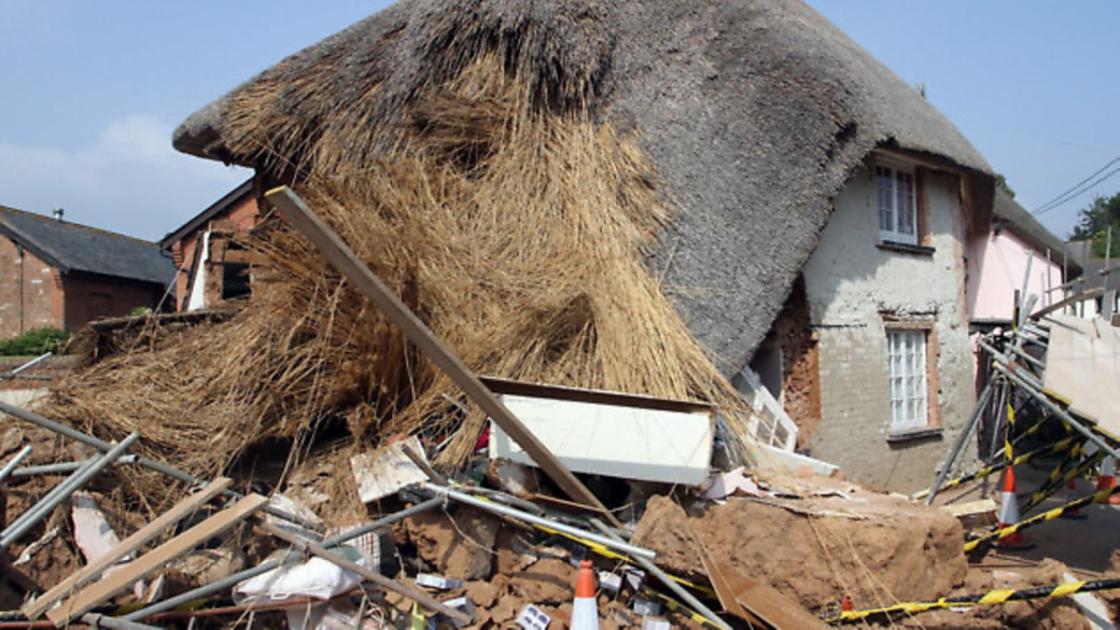There has been a lot of media interest recently around cob buildings, there longevity, and treatment after the Ship Inn Pub in Devon collapsed after a period of heavy rainfall. The question is, why did it collapse? We have seen a fair few articles blaming the changing weather patterns, poor surveyors who did not pick up defects that could have protected the building and just general uneducated drivel about how this material is inherently weak and should not be used anymore. Well, we say MADNESS! If you do not understand old buildings, do not talk about them, do not try to assess them and write nonsense about them.

Old buildings and traditional building techniques have lasted the test of time, through changing weather patterns and changes in social environments and requirements. So what is going wrong? Why do cob buildings collapse? And how should we maintain them?

Cob buildings, with their timeless charm and eco-friendly construction, have been standing for centuries as a testament to sustainable architecture. Cob buildings are one of the earliest forms of construction in the UK.
However, in the pursuit of modernization and durability, some well-intentioned homeowners may unwittingly compromise the integrity of these structures. One such threat comes in the form of cement render, a common building material used for its strength and weather resistance, particularly in modern, post 1930s construction.
In this blog post, we’ll explore why cement render can pose a threat to cob buildings and what alternatives may better preserve these unique structures.
The Essence of Cob Construction:
Cob construction involves combining soil, sand, and straw, a little touch of cow poop or similar to create sturdy, monolithic walls. The mixture is typically shaped into large blocks and then stacked and sculpted into the desired form. This traditional building technique has been proven to withstand the test of time, offering natural insulation and a low environmental impact. Repairs are generally quite straightforward as the material is in abundance and relatively cheap.
The Problem with Cement Render:
While cement render might seem like a logical choice for protecting cob walls, it can have detrimental effects on the structure over time. Cob and cement have different physical properties, leading to compatibility issues that compromise the cob’s inherent qualities.
Differential Movement:
Cob structures are known for their flexibility, allowing them to absorb and release moisture without sustaining damage. Cement, however, is rigid and prone to cracking. The natural expansion and contraction of cob due to changes in moisture levels can create stress points at the interface between the two materials, leading to cracks and potential structural issues.
Moisture Trapping:
Cob buildings rely on their ability to breathe, allowing moisture to pass through the walls. Cement render, being less permeable, can trap moisture within the cob structure. This trapped moisture can lead to the deterioration of the cob over time, potentially causing rot and compromising the structural integrity of the building.
Cob requires an element of moisture of course, therefore this balance is essential, to dry and it becomes like dust, too wet and it often slumps such as at the Ship Inn.
Chemical Incompatibility:
The alkalinity of cement can negatively impact the organic materials in cob, such as straw. This chemical reaction can break down the straw and weaken the overall structure. Over time, this degradation can manifest in the form of a weakened wall, further compromising the building’s stability.
Alternatives to Cement Render:
Preserving the authenticity and longevity of cob buildings requires alternative materials that are compatible with the unique characteristics of cob construction.
You will often see, particularly in Wiltshire Cob buildings and walls left bare and open to the elements, which is fine as long as the walls have a good hat such as thatch. Thatch provides a wide overhang and drives rainwater away from the property.
Lime Render:
Lime render is a more compatible alternative, offering breathability and flexibility that aligns with the needs of cob structures. Lime is also less alkaline than cement, reducing the risk of chemical damage to organic materials within the cob.
Earthen Renders:
Utilizing earthen renders that share similar properties with the cob mixture can enhance compatibility. These renders often consist of clay, sand, and straw, creating a cohesive bond with the existing cob walls.
Now you might be thinking, the same here can be said for all traditional buildings, and you would be right. But Cob is the material, as well as timber frame buildings where moisture can cause catastrophic issues.
Cement render, though widely used for its durability, may prove detrimental to the health of cob buildings. To ensure the longevity and authenticity of these historic structures, it is crucial to explore alternative rendering materials that respect the unique properties of cob construction. Lime render and earthen renders stand out as viable alternatives, offering a harmonious balance between modern protection and the preservation of ancient building techniques. By making informed choices, homeowners can contribute to the conservation of cob buildings for future generations to appreciate and enjoy.
If you are buying a Cob property we can help you understand what materials have been used and what works are required.
Please do not hesitate to contact us for a no-obligation discussion about your purchase.
